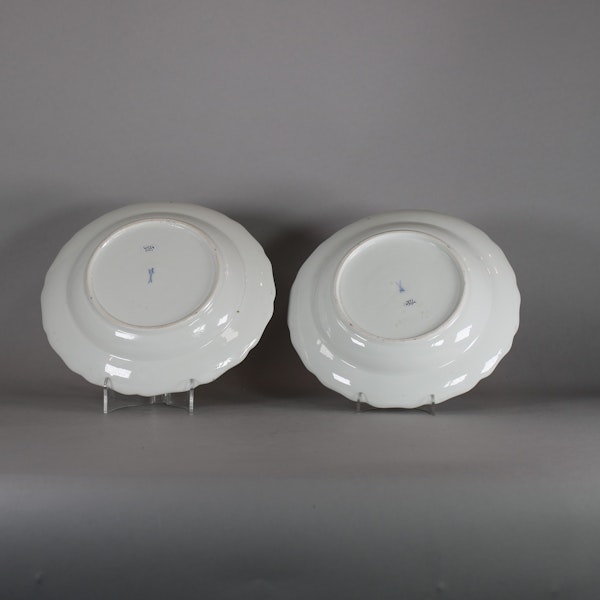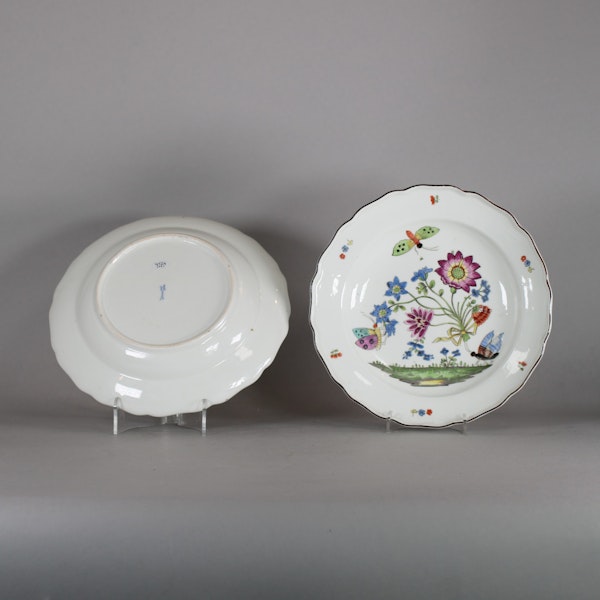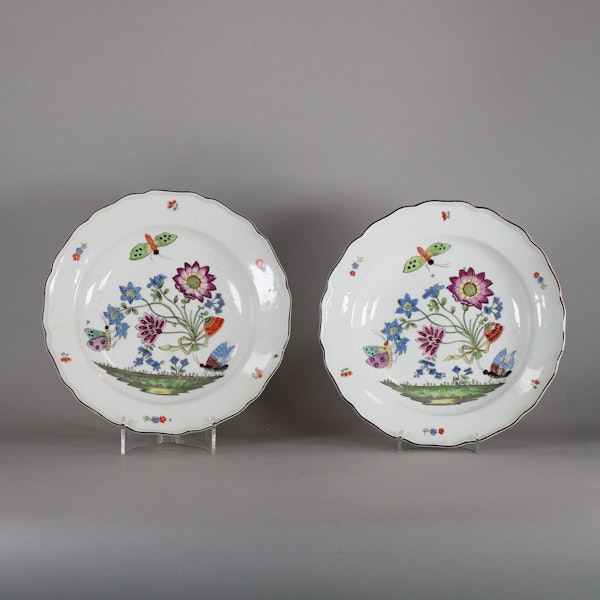Pair of Meissen Porcelain 'Bienenmuster' soup plates, circa 1740
Pair of Meissen Porcelain 'Bienenmuster' soup plates, circa 1740
POA
Description
Pair of Meissen Porcelain 'Bienenmuster' soup plates, circa 1740, with brown edged petal-shaped rim, decorated in polychrome enamels with three brightly coloured winged insects around a spray of ‘Indianische blumen’ tied with a ribbon, the wide rims with floral sprigs in the kakiemon style, the bases with crossed swords mark in underglaze blue and impressed 16.
Diameter: 21.5cm. (8 ½ in.)
Condition: Very slight rubbing to the wing of the insect on the ground
Although this popular Meissen design is referred to as the ‘bee pattern’ (bienenmuster), neither insects nor flowers bear a strong resemblance to any known species. Instead, the pattern was developed at the Meissen factory in Saxony by Johann Gregorius Höroldt (1696-1775), who was inspired by Japanese ceramic design and Indian textiles. Indian textiles were a key element of the global trade of the seventeenth and eighteenth centuries, and floral designs were a favourite theme of the Mughal emperors who ruled the Indian subcontinent at the time. At first, Mughal court painting depicted floral motifs naturalistically, but under the rule of Shah Jahan (1628-1658), more stylised depictions were favoured and came to dominate Mughal cottons and, consequently, European ceramic design. For a similar example see Pietsche, U., 2011 ‘Early Meissen Porcelain: The Wark Collection from the Cummer Museum of Art and Gardens’, p.250 See also: Hoffmeister 1999, I, no. 143
Provenance: Acquired in 1979
| item details | |
|---|---|
| Material and Technique | Enamelled Meissen porcelain |
| Origin | German |
| Period | 18th Century |
| Style | Other |
| Condition | Very good |
| Diameter | Diameter: 21.5cm. (8 ½ in.) |
Product REF: W524








